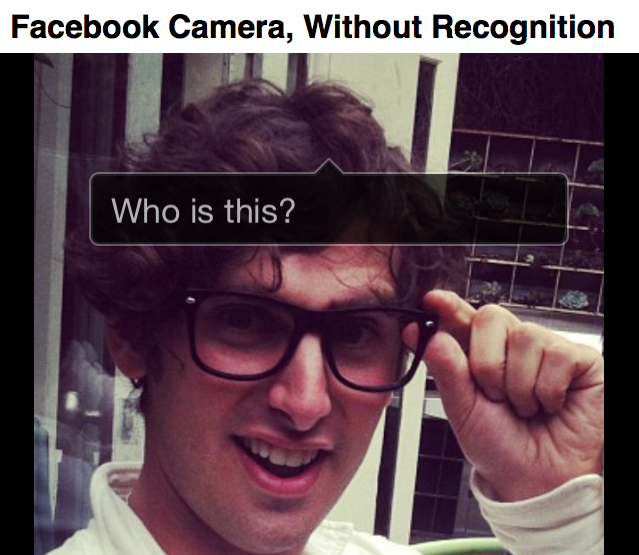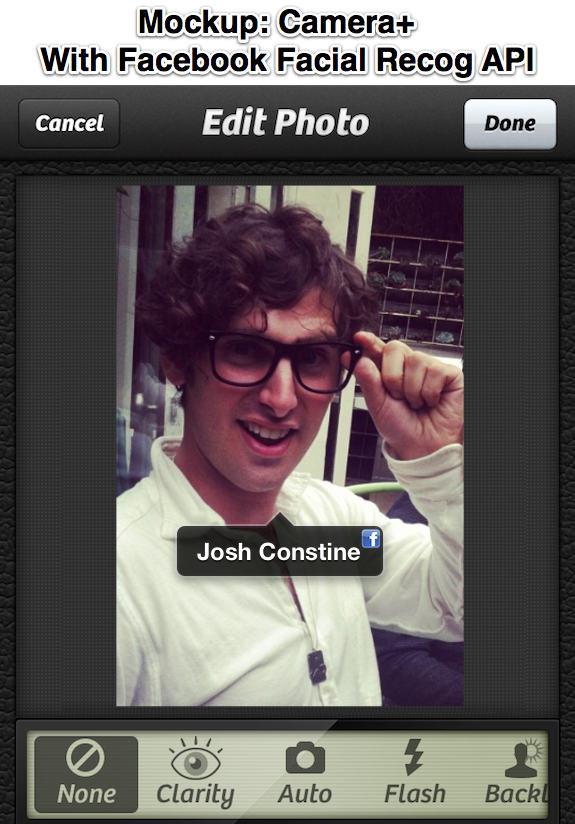Tagged photos are Facebook’s lifeblood, and it would be happy to suck them out of other apps. That’s why I suspect Facebook will resurrect Face.com’s facial recognition API, even though it just shut it down less than a month after acquiring the Israeli company.
Reopening the API will let other apps’ users easily tag their Facebook friends in photos…which can then be shared back to Facebook where they generate notifications, return visits, and engagement the social network can monetize with ads.
It’s all part of Facebook’s on-going quest to become the Omni-news feed, collecting content from everywhere for data-mining and display.
Too Many Faceless Photos
Tagged photos are extremely valuable to Facebook. They’re a strong signal for who you’re currently closest to, so they teach its EdgeRank algorithm who to show in your news feed. Tagged photos can appear on multiple people’s timelines so they generate more time-on-site from browsing. Plus, most people will return to Facebook immediately to check out a photo they’ve been tagged in. That’s why Facebook wants every face-filled photo tagged.

Until it was bought by Facebook for around $55 million, the Tel Aviv startup offered an API for scanning photos and recognizing your Facebook or Twitter friends. This meant instead of manually tagging someone and having to enter or search for their name, Face.com’s API would automatically pre-tag friends all you had to do was confirm they were accurate.
This reduced-friction flow makes you a hell of a lot more likely to tag all your friends in photos you upload, especially from mobile where typing and search are more annoying, and you want to get done quick so you can return to actually making memories, not just recording them.
That’s partly why Facebook acquired Face.com in the first place — to improve this functionality in its own apps. But without an API, Facebook is getting tons of untagged photos flowing in from Instagram, Camera+, Hipstamatic, and other apps. That’s a lot of engagement and valuable data it’s missing.

Resur-Facing The API
When Face.com was bought it promised devs, “We love you guys, and the plan is to continue to support our developer community.” Yet this weekend, an email it sent to developers published by Newsgeek in Israel and The Next Web state-side confessed that part of the acquisition “includes closing down other products and services that we are no longer able to support, and this includes the Face.com developers API.”
I don’t think it actually broke that initial promise, though. It just can’t reveal what’s next. When I asked Facebook about plans for a revived API, it coyly replied “we don’t have a comment/anything to share here” but it rarely signals until its ready to launch something.
I bet the API is going into a cocoon to later emerge as something but more squarely aligned with Facebook long-term plan. Here’s what I see coming down the pike.
Facebook can’t just auto-tag your photos on its end after they’ve been uploaded from somewhere else. People might find it creepy or the tags could be inaccurate. It needs people to tag them as they’re uploaded, and that means offering an API.
I expect it to allow any app that’s received proper Facebook data permissions from you to scan your photos and pre-tag them with your Facebook friends. If those friends have connected accounts on that third-party service, their local usernames will be mapped to the tags.

For example, a friend goes to upload an Instagram of me, the hypothetical Facebook face API recognizes me as Josh Constine, and then tags me within Instagram’s feed as my username “joshsc”, but if shared to Facebook I’d be properly tagged with real name and profile.
The question is whether Facebook will only provide the API if the tagged photos are shared back to it. That could be problematic as where a photo is syndicated is often the last step before an upload is completed, so I expect it will offer the API to any app that includes a prominent Facebook sharing option.
This neatly follows the recent trend of Facebook dangling a “we-get-content-you-get-traffic” exchange in front of other mobile apps through its new “Like and Follow Actions“. Meanwhile, Facebook’s Open Graph API is swallowing up content as fast as it can. A recognition API could face the social network in the right direction to become the only news feed you need.
